Looking To Transplant Your Cyclamen? Do It Just Before Their Dormancy Period

PERENNIALS > CYCLAMEN > TRANSPLANTING

Elizabeth is a Permaculture Garden Designer, Sustainability Consultant and Professional Writer, working as an advocate for positive change. She graduated from the University of St. Andrews with an MA in English and Philosophy and obtained a Diploma in Applied Permaculture Design from the Permaculture Association.
Reviewed By COLIN SKELLY

Colin is a Horticulturist and Horticultural Consultant with experience in a range of practical and managerial roles across heritage, commercial and public horticulture. He holds the Royal Horticultural Society’s Master of Horticulture award and has a particular interest in horticultural ecology and naturalistic planting for habitat and climate resilience.
IN THIS GUIDE
CYCLAMEN GUIDES
Common Problems
Container Growing
Growing From Seed
Indoors Care
Overwintering
Propagation
Red Varieties
Transplanting
Both hardy and tender cyclamen can be relatively easy flowering plants to grow.
Hardy types will remain in a garden year-round, in the ground or in containers.
Tender types are typically grown as houseplants over the winter months and placed outdoors or in a cool spot during the summer while they are in their dormancy period.
To transplant cyclamen:
- Cut back any dead foliage in the spring dormancy period.
- Dig under the plant and lift gently from the soil or growing medium.
- Divide the tubers (if you wish to do so).
- Replant or pot up the dormant plants as soon as possible.
| Difficulty | Easy |
| Equipment Required | Trowel or spade |
| Preferred Aspect | Partial shade, bright but indirect light indoors |
When To Transplant
You can transplant hardy cyclamens in Autumn between September-October after the leaves die back.

Tender types should be lifted and transplanted in spring when the plants die back for their summer dormancy.
These are generally the best times to transplant cyclamens, though the best time to do so will depend on which particular variety you are growing.
1) Cut Back Dead Foliage
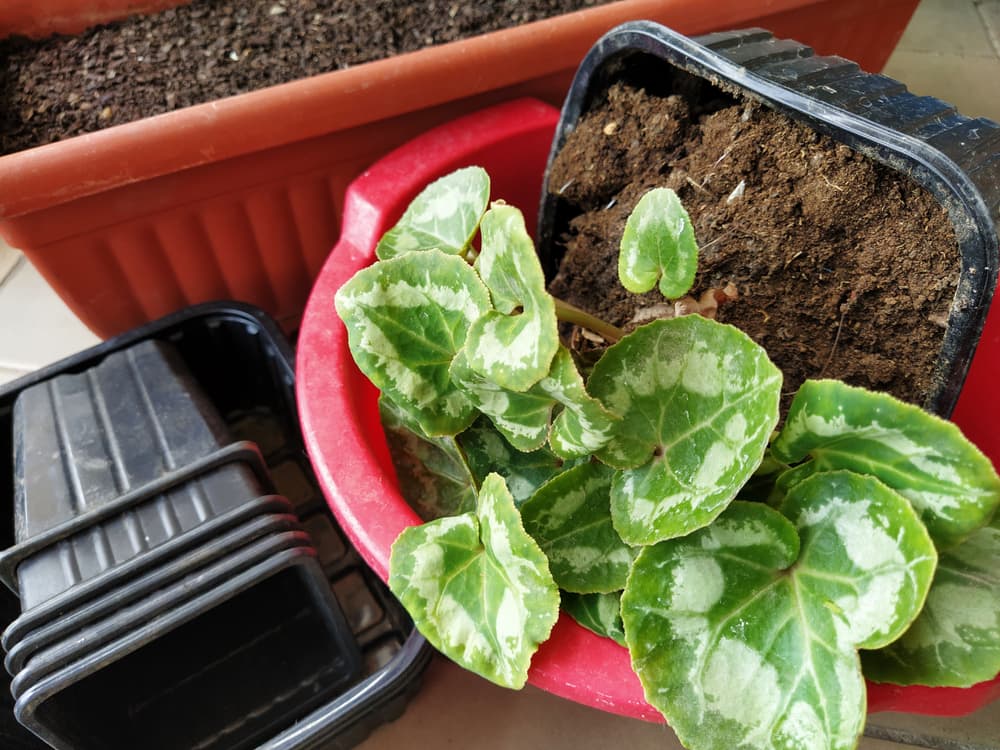
Transplantation is easiest when the plants enter their dormant phase.
You will be able to tell when cyclamens are entering dormancy because the leaves will be dying back.
Before you lift and transplant the plant, it is easier if you cut back all the dead foliage so that you can see and handle the plant more easily.
2) Lift The Plant
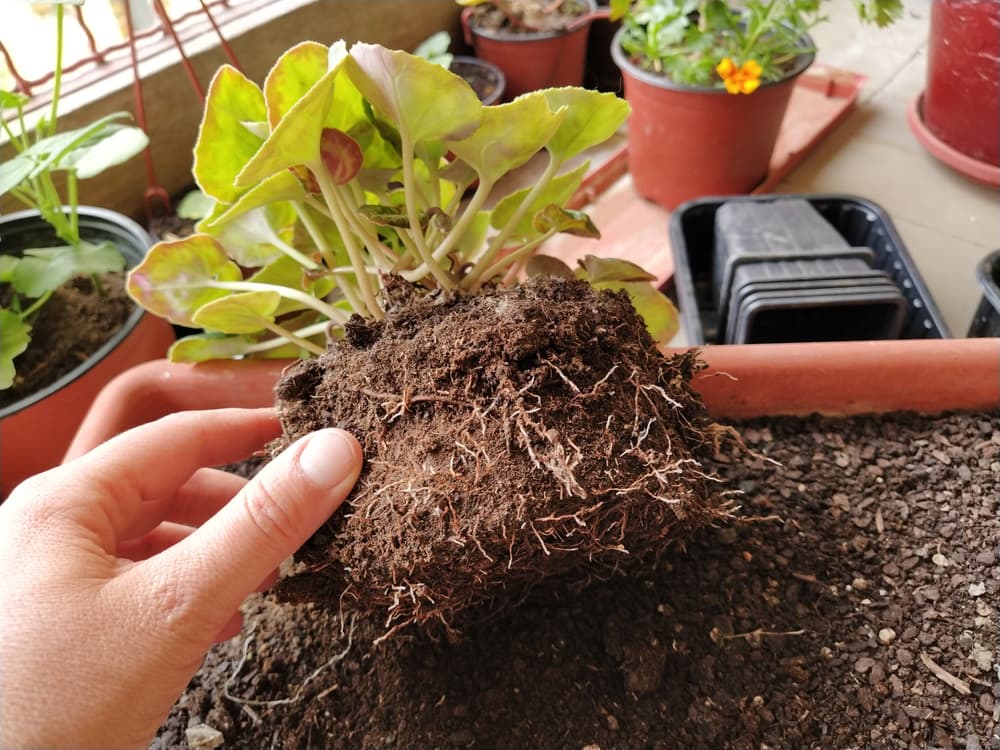
Once you have decided to move cyclamen, simply dig down below the plant with a trowel or small spade and lift it from the soil, or remove it from its present pot if it is growing in a container.
Lift the plant out of the soil and shake off or remove any clods or clumps of soil so that you reveal the tubers.
3) Divide The Tuber
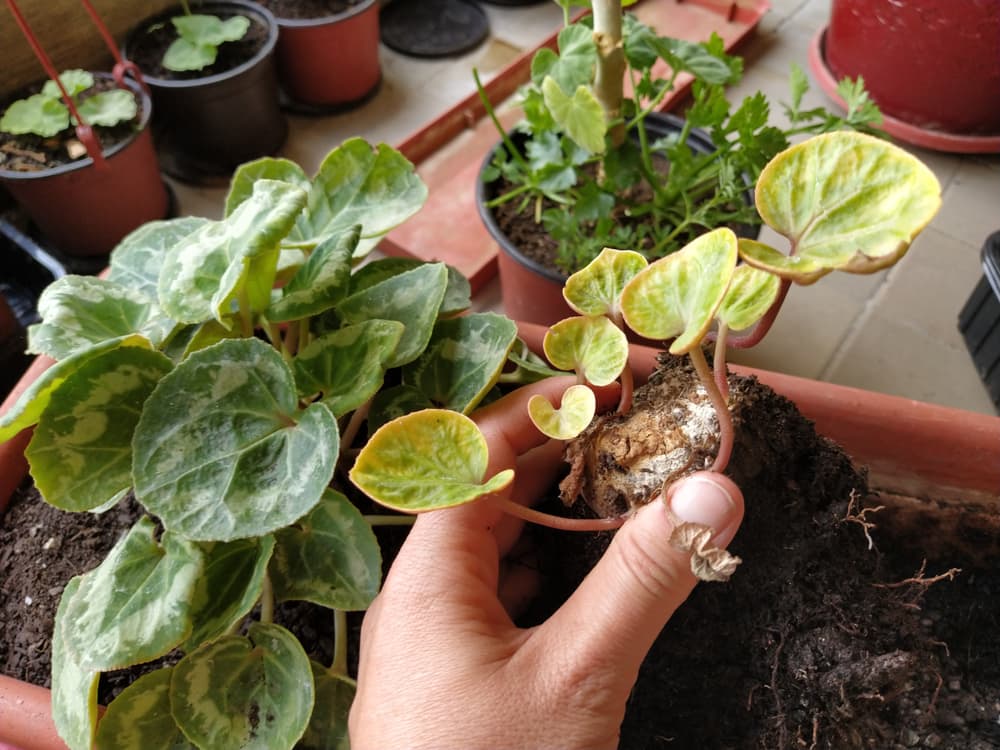
If you wish, you can divide the tuber to propagate your cyclamen.
4) Replant
Once you have lifted a plant, it is important to replant it as soon as possible.
Make sure you are clear about which type of cyclamen you are growing and where it will happily grow.
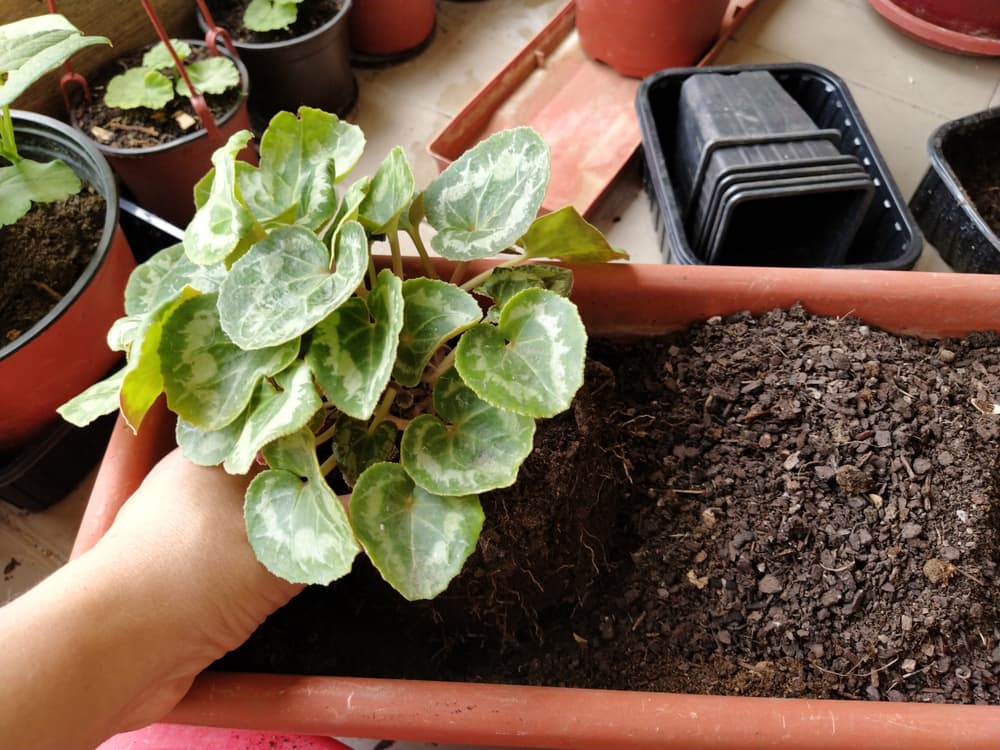
Hardy cyclamens like a partially shaded spot, in fertile soil that is moist but free-draining and is rich in organic matter.
They do well in dappled shade below trees or shrubs, especially on slopes.
“I always make sure to mark where I have planted out dormant Cyclamen,” shares Colin Skelly, a Horticulturist with almost 15 years of experience in the industry.
“This will ensure that I don’t forget and disturb the planting site at a later date.
“I simply put a cane where I have planted as a reminder. I also label the planting site so that I have a record of the species or cultivar that has been planted.”
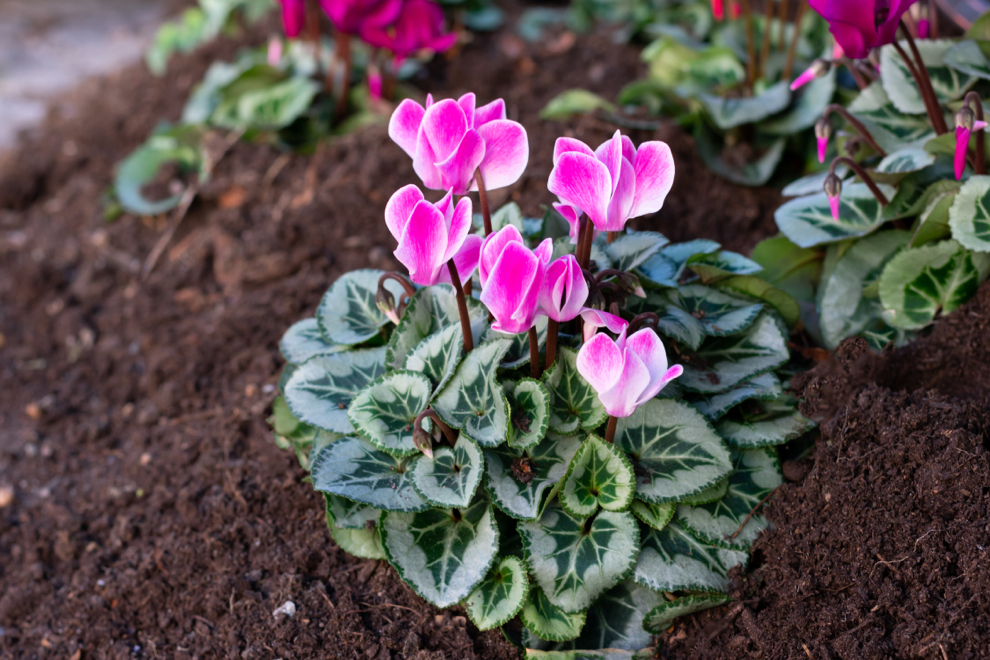
They can also be grown in suitable containers.
Tender cyclamens need a free-draining container, filled with a free-draining yet fertile medium.
This should be placed indoors in bright, indirect sunlight, at temperatures between 10-15°C.
